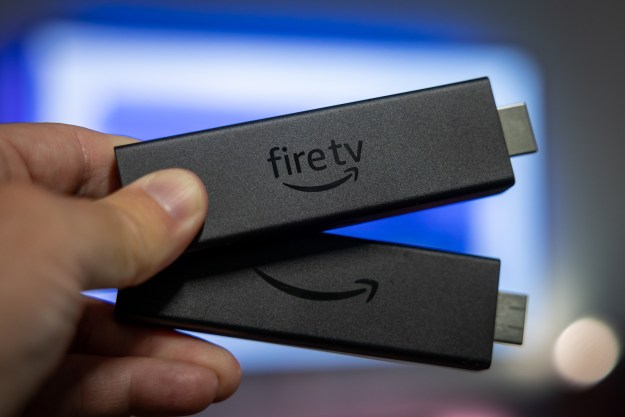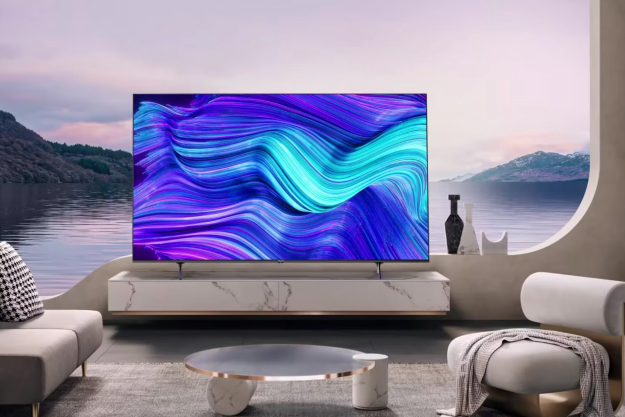“The Yamaha NX-U10 is an ingenious combo speaker system that works well with laptops, space-deprived desktops, and MP3 players.”
- High volume output for a USB speaker; great for travel purposes; clean sound at modest volume levels
- High price for 20W speakers
Summary
Yamaha is known for high quality musical instruments, professional level amps, digital mixers, and dozens of audio processing products. In a push to woo some of the iPod-toting, laptop-carrying masses, Yamaha’s R & D folks developed a USB speaker system that claims to blow all other USB speakers out of the water. Yamaha insists their technogoloy is groundbreaking and that the NX-U10 offers the world’s first 20W output from a portable USB speaker system.
While some older and more jaded techies hear “world’s first” and cringe with sore memories of false propaganda used to hawk not-so-revolutionary products, every once in a while, we’re pleasantly surprised with a really innovative product. The Yamaha NX-U10 may just be one of those surprising products that performs better than expected and opens the door to new adaptations. Read on to find out what we thought of the NX-U10 and whether we’d recommend dropping $149 USD on such a system.
Features and Design
Available in sleek black or silver, the Yamaha NX-U10 has a rounded rectangular shape, as if a brushed metal tube had been flattened a bit, made pretty, and then filled with circuitry and speakers. The outside of the silver NX-U10 feels almost exactly like a MacBook Pro. The right and left sides are capped with rubber bushings (to dampen vibrations for the bass), and plastic end pieces. The left end has the power button and the right end has the volume scroll and the 1/8″ audio input jack. The USB input and (optional use) battery bay are on the back of the NX-U10, underneath a silver-colored plastic door.
USB Weakness vs. PowerStorage
One of the truly sensible reasons why USB-powered speakers have gotten a bad rap is the low power output of the USB bus itself. Speakers require electricity to generate sound, and while more electricity doesn’t always equate to better sound, it gives a rough logic to louder, more powerful sound. (Think of the massive electrical arrays that power the monstrous speaker systems at concerts, and you’ll understand what power can do for sound.) USB generates only 5V/0.5A of power – just enough to charge the average cell phone and carry data signals over modest distances. This 5V power leaves the average USB speaker with 0.5W of power per channel. If you don’t know what 0.5W of power sounds like, trust us — it’s really pathetic.
Yamaha overcame this USB power limitation with their trademarked PowerStorage™ Circuit to provide 10W per channel, or 20W total. This is 20 times the output capability of other USB speakers. The PowerStorage Circuit acts as an internal power reserve that takes in 5V of USB power and uses enough to play active music on its speakers. The music files being played essentially consume electricity in the same way Variable Bit Rate files use disk space. When there’s more music to play, the speakers use more electricity. When there’s less signal pumping through the Yamaha NX-U10, the PowerStorage Circuit saves up those little electrons and holds them in reserve until they’re needed in greater quantity. Pretty brilliant.
The Yamaha NX-U10 USB Speaker
SR Bass
While going a bit far with acronyms and trademarked names, Yamaha made another positive step with their “swing radiator” SR Bass technology. SR Bass uses a passive radiator to increase sound pressure levels. This “maximizes internal energy to produce bass that’s deeper and more powerful than you ever thought possible from a compact speaker.” As noted later in usage tests, the bass is notably stronger than expected, especially for such a compact and light speaker system.
Hissy Fits and Pops
Some external speakers (both for laptops and iPods) produce faint hissing sounds, unintentional white noise, and occasional pops. This is generally due to poor design, electrical interference, and/or trouble converting a digital signal to analog and sometimes back to digital. The Yamaha NX-U10 seems to overcome this potential for accidental noise spillage, partly because of the power management built into the speaker system, and partly because digital audio remains digital all the way from your computer/iPod to the speaker.
Options & Included Items
Not everyone can use the NX-U10 in USB mode 100 percent of the time. Knowing this, Yamaha added the option of using the NX-U10 with an included AA battery pack (great for picnics, hiking, etc.). Yamaha also included a very handy AC-to-USB adaptor and mini-USB cable. Additionally, Yamaha gave the NX-U10 a 1/8″ audio input (and included a cable) so it can receive audio from various mp3 players, mp3 phones, and countless other sources that use 1/8″ audio out. Note that when using the NX-U10 with the 1/8″ audio cable, the AA battery pack or the AC-to-USB power adaptor will be required to power the speakers. Finally, Yamaha included a soft (synthetic) cloth carrying case for the speaker system.
The back of the Yamaha NX-U10 reveals slots for batteries
Windows and Mac
Because the Yamaha NX-U10 is a speaker, it’ll work fine on Windows and Mac systems: 98SE to Vista and Mac OS 9.1 or later. No official word from Yamaha on Linux, but the NX-U10 probably works fine there, too. Windows 98SE and Me users and those reactionaries with OS 9.1 will need to pull drivers from the included CD, whereas Windows 2000, XP, and Vista users, as well as Mac OS X users, will find that the NX-U10 is automatically recognized and configured by your OS.
Setup and Use
Setting up the Yamaha NX-U10 USB speaker is quick and easy. Remove the NX-U10 from the Styrofoam packaging and set it on a table or desk. Get the mini-USB cable out of the box and plug it into your computer’s available USB slot. It shouldn’t matter if the port is USB 1.1 or USB 2.0. You may need to install drivers for the NX-U10 if you’re using a super-old OS. Otherwise, your computer should instantly recognize and configure itself to play audio through the NX-U10.
One of the worries I had when first using the NX-U10 was the drain on my laptop’s battery; 20W of speaker power could really suck a battery dry in a matter of an hour or so, especially if the laptop was being actively used. I was pleasantly surprised to find that the NX-U10 didn’t wipe out my battery any faster than other USB-powered devices. Despite the 20W output, the NX-U10 draws the same 5V power from the USB bus and uses the PowerStorage Circuit to make up the difference. With the NX-U10 plugged in and playing some of my iTunes favorites, the extra battery drain was barely noticeable. A 50% drain came roughly 4 minutes faster. Not bad at all.
Once your computer and the NX-U10 are connected, play your audio files to test the output. I played a wide variety of songs from artists like Jack Johnson, The Bravery, Bauhaus, Morcheeba, and The White Stripes.
With songs from Jack Johnson and The Bravery, the NX-U10 seemed to push sound straight ahead, with a slight down-angle. At lower and middle volumes, the mids were strongest, followed by highs and lows. While some of the lows were overpowered by highs at top volume levels, the NX-U10 balanced sounds well from 0% to 60% volume. It is unlikely that volume would be turned up past 60% in office or public spaces. The NX-U10 gets pretty loud.
When playing Bauhaus (“Bela Lugosi’s Dead”), the NX-U10 came to life, mocking a 3D surround sound effect. I was very surprised to hear this from a small 20W speaker system. Instruments played straight forward — clean and bright — but the deep bass of Peter Murphy’s voice was literally shooting off in all directions. It was a huge surprise, so much so that I had other people come in to listen and verify that I wasn’t imagining things. They were equally impressed.
While the Yamaha NX-U10 has some pretty impressive features and sounds quite good, a few of the stats left me disappointed. One example is the somewhat limited frequency response of 90Hz to 20kHz. Despite the poor stat on the low frequencies (anywhere from 20-80Hz would be better), the NX-U10 puts out pretty impressive bass for a compact, low-power device. This could be a good example of when a weak stat doesn’t necessarily equate to weak performance.
Another positive feature is its portability. The Yamaha NX-U10 is lightweight (but not flimsy at all) and has a small enough body to easily fit in a briefcase, backpack, laptop bag, carry-on luggage, and maybe even some larger purses. The USB power draw means that travelers can take the NX-U10 on trips to foreign countries without ever needing a power adapter. That’s a huge bonus that fellow travelers will readily understand.
Conclusion
The Yamaha NX-U10 USB speaker is an ingenious combo speaker system that works well with laptops, space-deprived desktops, and portable audio players like the iPod. It’s light and easy to transport, and the fact that it draws power from a USB port means that you’ll never have to carry a spare power adapter with you (unless you intend to use it with non-USB sources).
The very idea of USB speakers seems like a low-quality abomination, but Yamaha has taken some really cool technology and crammed it into the NX-U10 for your listening pleasure. While the Yamaha NX-U10 won’t appeal to strict audiophiles or compete with more powerful desktop systems like XtremeMac’s Tango or the iPod HiFi, it really does make for a fine speaker set for office and mobile use. The mobility factor alone is worth a thumbs up.
I’d recommend the NX-U10 for mobile uses: on-the-road presentations, romantic picnics, vacation travel outside the USA, etc.
Pros:
• High output for USB speaker
• Excellent for travel and off-grid uses
• Clean, enjoyable sound at modest volumes
Cons:
• High price for 20W speakers
Editors' Recommendations
- Yamaha’s new compact soundbar is small enough to fit on your desk
- Yamaha’s $100 TW-E3B true wireless earbuds are its smallest yet
- Yamaha’s RX-V6A and RX-V4A are its new 8K-compatible receivers
- Forget the remote: Yamaha offers two new affordable, Alexa-enabled soundbars




